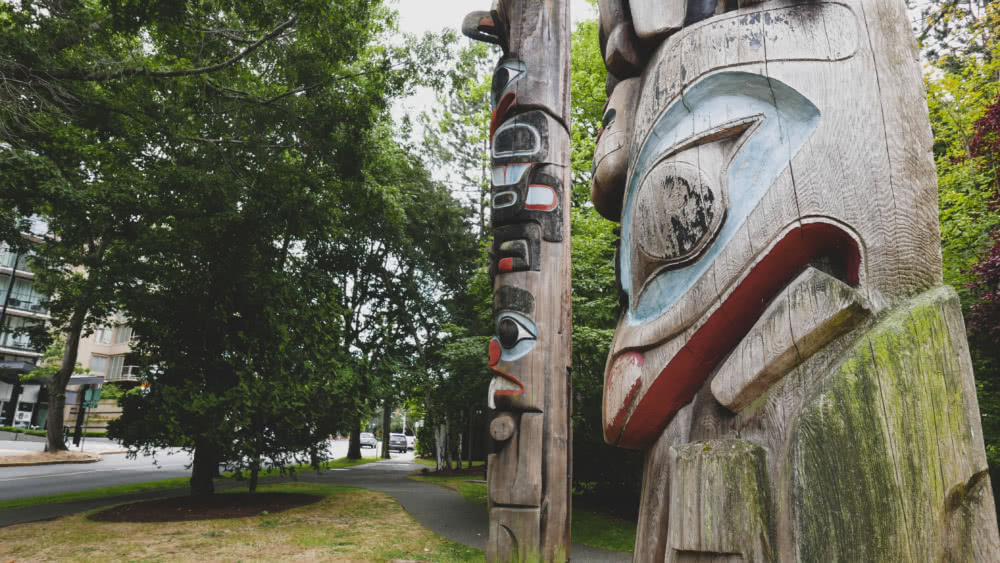Spotlight Saturday: Indigenous Homelessness in Canada
The month of June is an opportunity for all Canadians to learn about Indigenous history together. We celebrate National Indigenous History Month by reflecting on the history, heritage and sacrifices of Indigenous peoples in Canada. It is also an opportunity to recognize the strength and contributions of present-day Indigenous communities.
Most importantly, National Indigenous History Month is a time for learning.
Indigenous Homelessness in Canada
The definition of Indigenous Homelessness in Canada as adopted by Reaching Home: Canada’s Homelessness Strategy – developed by the Indigenous Homelessness Steering Committee and the Provincial Indigenous Homelessness Committee in 2019:
“Indigenous Peoples who are in the state of having no home due to colonization, trauma and/or whose social, cultural, economic, and political conditions place them in poverty. Having no home includes: those who alternate between shelter and unsheltered, living on the street, couch surfing, using emergency shelters, living in unaffordable, inadequate, substandard and unsafe accommodations or living without the security of tenure; anyone regardless of age, released from facilities (such as hospitals, mental health and addiction treatment centers, prisons, transition houses), fleeing unsafe homes as a result of abuse in all its definitions, and any youth transitioning from all forms of care”.
As stated by Caryl Patrick, a York University researcher, “Aboriginal homelessness in Canada is a crisis that should be considered an epidemic.”
On and off reserve, Aboriginal Canadians are disproportionately poor and vulnerable to homelessness. Today, Urban Indigenous Peoples experience homelessness at a disproportionate rate and make up a significant percentage of the homeless populations in cities. According to Patrick (2014) “Some sources have suggested that Indigenous homelessness in major urban areas ranges from 20-50% of the total homeless population, while others have reported that the range may be much wider – from 11 to 96%.”
- In Greater Victoria, one-third (33%) of respondents experiencing homelessness identified as Indigenous, much higher than the proportion of Indigenous people among the broader population (4.7%). – Point-in-Time Count 2018
Causes
Indigenous experiences of homelessness can be directly correlated to the ongoing impacts of colonization, including Residential Schools, the Sixties Scoop, displacement from land, culture, and resources through the Indian Act, and the intergenerational trauma rooted in the ongoing process of colonization.
Existing social issues in Indigenous communities including familial dysfunction, substance use, addictions, health issues, and community violence can be directly linked to these unresolved historical and cultural intergenerational traumas contributing to high incarceration rates, high suicide rates amongst youth and Indigenous pathways into homelessness.
1) The federal government began housing cuts in the 1980s and stopped developing new subsidized, affordable housing in 1993. Growth in housing need began to outpace the number of available social housing units. Canada also made employment insurance qualifications more restrictive in the 1990s.
2) Residential real estate prices in major cities have more than doubled in the past 15 years, while real income stagnated or declined. Higher mortgages led landlords to increase rents dramatically. Combined, these changes have prevented the most vulnerable Canadians from attaining affordable housing and impacted Aboriginal people more drastically than other populations.
While all Canadians are facing an increase in income inequality and decreased availability of affordable housing across Canada, Indigenous peoples must also face discriminatory structural issues such as transitions from reserves to urban living, racism, and landlord discrimination.
Research has also shown that Indigenous Peoples experience lower levels of education, poorer health, higher rates of unemployment, and lower-income levels compared to non-Indigenous people.
Local Facts
- In the Greater Victoria 2018 Point-in-Time Count, one-third (33%) of respondents experiencing homelessness identified as Indigenous, much higher than the proportion of Indigenous people among the broader population (4.7%).
- More than a third of Indigenous respondents identified the need for services that relate to intergenerational trauma (37.2%) and Indigenous treatment (33.6%). (Point-in-Time Count 2018)
- Over a fifth (21.3%) of Indigenous respondents identified the need for culturally sensitive services. (Point-in-Time Count 2018)
- A higher proportion of Indigenous respondents identified as female and women (40.3%) and other gender identities (4.2%) compared to the non-Indigenous survey population (24.5% and 0.9% respectively). (Point-in-Time Count 2018)
- In a survey conducted by the Aboriginal Coalition to End Homelessness, “Health and Well Being: Our Voices, Our Vision” (2018):
-
- Indigenous respondents reported being released back onto the streets directly from the hospital.
- Reported high usage of emergency room.
- 65% of respondents indicated substance use as their biggest health challenge outside of physical health, 59% identified emotional health, and 56% indicated spiritual health as their biggest health challenges. These findings indicate that the needs of the Indigenous Street Community are not being fully met, and there is a need to Indigenize harm reduction practices.
National Facts
- Indigenous Peoples makeup only 4.3% of the overall Canadian population but comprise 30.6% of the youth homelessness population.
- According to Belanger et all (2013) , on any given night, 6.97 percent of the urban Indigenous population in Canada is homeless, as compared to a national average of 0.78 per cent.
- Research by Belanger et al (2013) found that one in 15 urban Indigenous people are homeless, compared with the average of one in 128 non-Indigenous people across Canada. In other words, urban Indigenous people are about eight times more likely to be homeless than the non-Indigenous population.
- According to Patrick (2014) “Some sources have suggested that Indigenous homelessness in major urban areas ranges from 20-50% of the total homeless population, while others have reported that the range may be much wider – from 11 to 96%.”
Solutions
In our next blog honoring National Indigenous History Month, we will be looking at local and national solutions as identified by Indigenous respondents, local organizations, and government responses to indigenous homelessness.
Sources:
“Health and Well-Being: Our Voices, Our Vision” (2018): Aboriginal Coalition to End Homelessness
Aboriginal Homelessness in Canada: The Borgen Project
Priority Populations – Indigenous Homelessness: Homeless Hub
